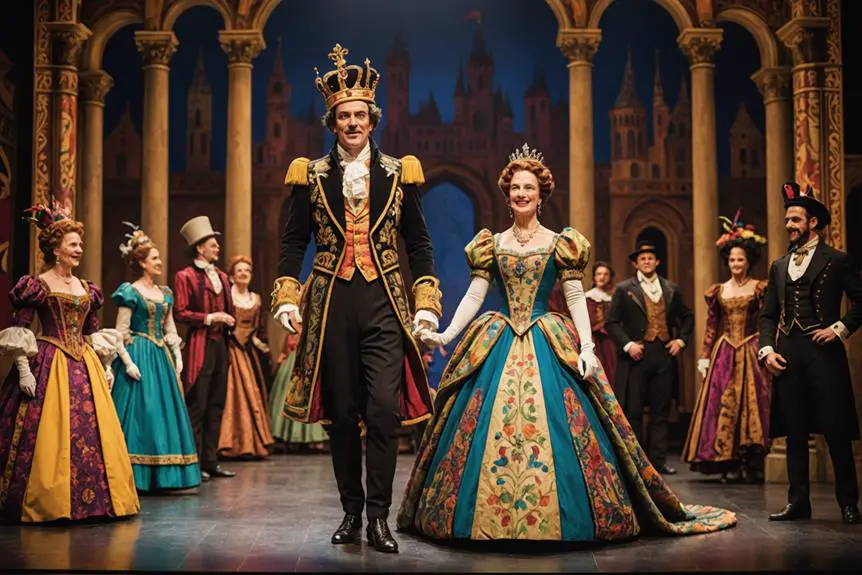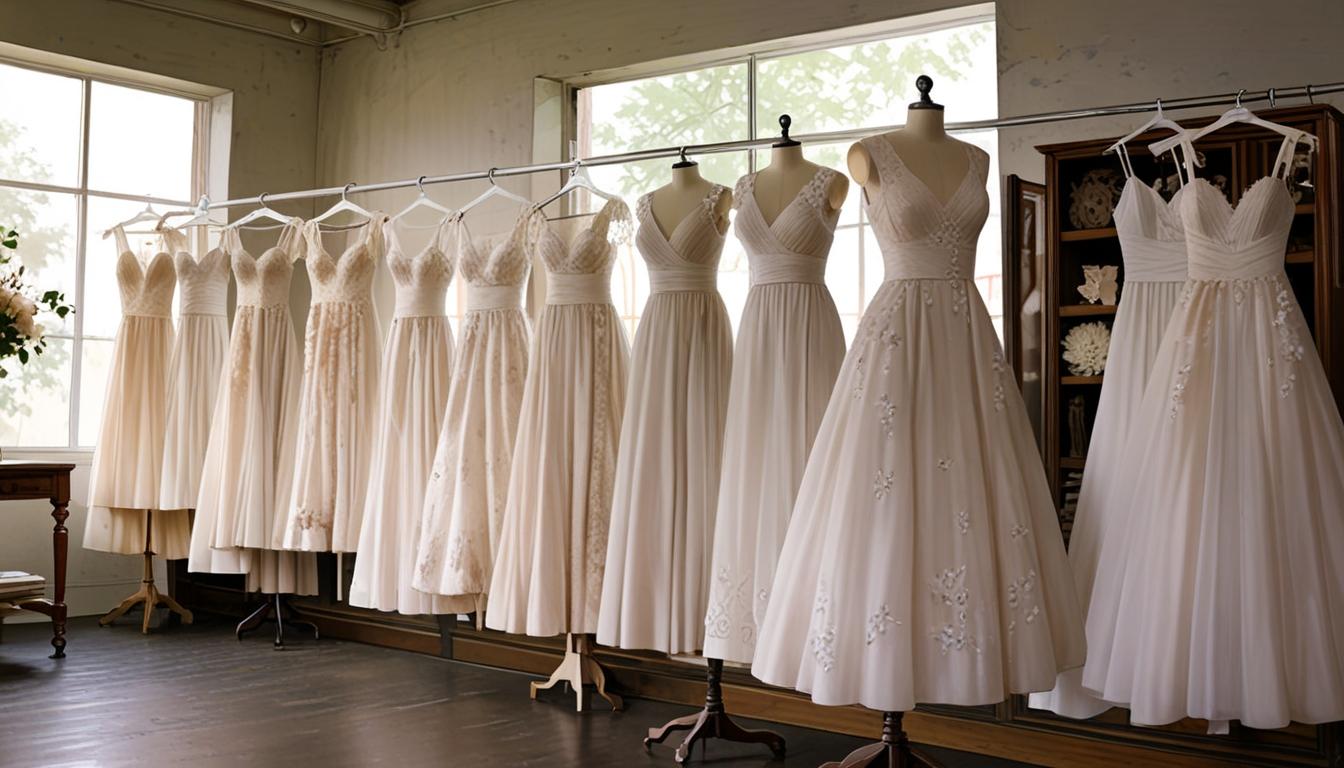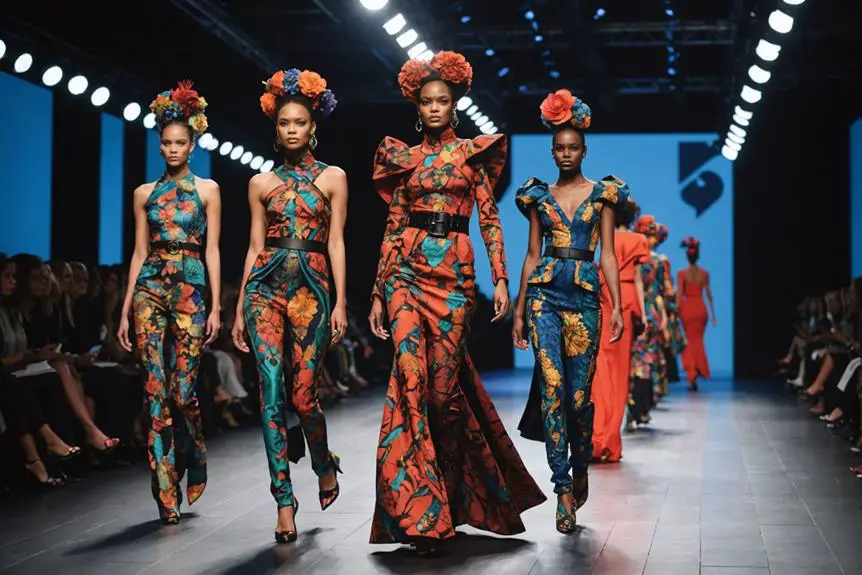To dress as a theater performer, you'll want to balance character authenticity with personal comfort. Start by selecting costumes that reflect your character's traits, whether it's vibrant colors for musicals or classic styles for dramatic pieces. Prioritize breathable fabrics and a proper fit for ease of movement. Don't forget the importance of makeup; go for bold colors that pop under stage lights, and guarantee your hair is styled to enhance your look. Choose accessories that complement but don't overshadow your costume. Embrace this transformative experience, and you'll not only connect with your character but also captivate your audience! There's much more to explore.
Importance of Costumes
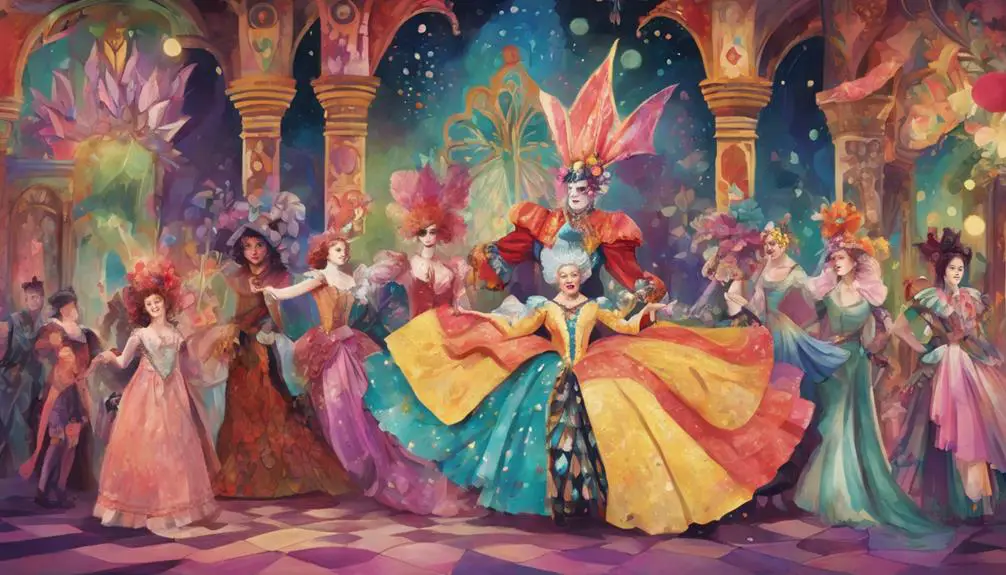
When you step onto the stage, the costume you wear isn't just fabric—it's a visual cue that connects you to your character and sets the tone for the audience. Costumes serve as a powerful representation of character identity, reflecting essential traits like time period, class, and personality. This connection is essential for the audience's understanding of the story being told. In the world of vintage clothing, understanding popular vintage categories can help you select costumes that are authentic to the era you wish to portray.
Throughout history, the evolution of costumes, from Ancient Greece to modern productions, highlights their important role in storytelling and character development. Well-designed costumes not only enhance the character but also contribute greatly to production authenticity. Skilled designers and fabricators collaborate closely with directors to guarantee that every piece aligns with the overall vision, creating a cohesive experience for the audience.
In live performances, where every detail is magnified under bright lights, costumes must withstand scrutiny. They need to be visually striking while also allowing you to move comfortably and expressively. The physical connection to your role is deepened through costumes, enabling you to shift from your personal identity to that of your character seamlessly. This transformation enhances your performance quality, allowing you to deliver a more immersive experience for the audience.
Ultimately, costumes are an integral part of the theatrical experience, enhancing both your portrayal and the overall narrative. So, as you prepare for your next performance, remember that your costume isn't just an accessory; it's an essential element of your character's journey.
Dressing for Different Genres
Costumes vary considerably across different theatrical genres, each requiring a unique approach to effectively convey the story and connect with the audience. In musicals, you'll want to embrace vibrant colors and bold patterns. These eye-catching choices not only attract attention but also enhance the energy of the performance, drawing the audience into the lively atmosphere. On the other hand, classical theater demands a more refined dress code, often featuring formal attire that reflects the time period and the character's social status. Historical accuracy is key here, so consider fabrics and styles that transport your audience back in time.
Contemporary plays often favor modern clothing styles, allowing you to connect with the audience on a relatable level. This genre encourages you to stay in tune with current trends, making your character feel real and accessible. In fantasy or sci-fi productions, don't shy away from imaginative elements; unusual materials, elaborate accessories, and fantastical designs can truly transport the audience to different worlds.
When performing in dramatic pieces, choose subdued colors and simpler silhouettes. This approach emphasizes the emotional depth of your characters, ensuring that the focus remains on the performance rather than the attire itself. By understanding these genre-specific guidelines, you'll not only look the part but also enhance the storytelling process, creating a more immersive experience for everyone involved. So, get ready to plunge into the world of costumes that reflect the essence of each theatrical genre!
Makeup and Grooming Tips

To truly shine on stage, mastering your makeup and grooming is essential. As a performer, you need to guarantee that your makeup stands out under those bright stage lights. Natural makeup might look great in person, but it can easily wash out under the spotlight. Instead, opt for heavier makeup with darker shades for your cheeks and vibrant lip colors to enhance visibility. This not only helps your features pop but also maintains a polished appearance throughout your performance.
Don't forget about waterproof products! The heat from stage lights can cause makeup to run, so waterproof formulas are your best friend. For added dimension, apply highlighter on top of your cheekbones and contour beneath them to enhance your facial structure, beautifully showcasing your features in the best light.
When it comes to eye makeup, avoid heavy black eyeliner. It can create dark circles under bright lights, which isn't the look you want. Instead, choose lighter shades that complement your features and keep your eyes looking bright and engaging.
Grooming is just as important as makeup. Make sure your hair is clean, styled, and out of the way to avoid obstructing views for your audience. A polished appearance isn't just about makeup; it's also about how you present yourself as a whole. By following these makeup and grooming tips, you'll not only look fantastic but also feel confident as you take center stage!
Choosing Comfortable Attire
Mastering your makeup and grooming sets the stage for your performance, but what you wear can make or break your comfort and ability to express your character. Choosing comfortable attire is essential for any theater performer, as it directly impacts your performance. Look for costumes that allow for ease of movement; after all, you'll likely be engaging in physical activity on stage.
Opt for breathable fabrics that help maintain your comfort, especially under the bright, sometimes sweltering stage lights. You want to stay cool and focused, not distracted by discomfort. It's vital that your costume fits well without being restrictive, allowing you the freedom to move and express yourself freely.
Don't forget about the importance of layering clothing. The temperature in theaters can vary, so being able to adjust what you wear will keep you comfortable throughout your performance. Finally, avoid heavy accessories—they can be cumbersome, potentially distracting you from the character you're portraying. You want your audience to focus on your performance, not on your struggle to manage a bulky necklace or oversized earrings.
Accessories and Final Touches
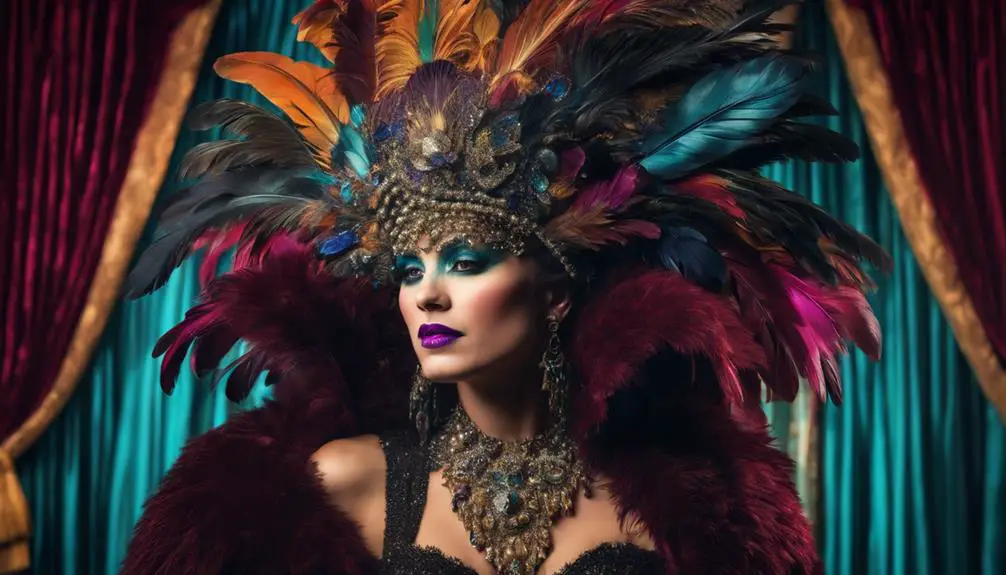
When it comes to completing your look, choosing the right accessories and final touches can elevate your character and performance. Accessories play a vital role in enhancing your costume without overshadowing the essence of your character. Opt for statement pieces that align with the overall aesthetic of the performance, ensuring that each item complements your portrayal.
As you select jewelry and other accessories, prioritize comfort and security. Movement on stage can cause items to shift or become a distraction, so make sure everything fits well. Think about the impact of stage lighting, too; materials that create unwanted reflections or glare can divert attention from your performance, so choose wisely.
Makeup is another essential element in your final touches. Bold colors and styles can enhance your character portrayal, especially under bright stage lights. Use makeup to highlight your features, ensuring they're expressive and aligned with your character's narrative. Hair accessories can also add flair, so consider how they tie into your costume.
Frequently Asked Questions
What Do You Wear to a Theatre Performance?
When you attend a theater performance, consider costume selection carefully. Prioritize fabric choices for comfort and stage visibility. Ascertain your outfit reflects character representation and maintains historical accuracy for an immersive experience without sacrificing comfort considerations.
What Is the Dress Code for the Theatre?
When considering theater etiquette, choose your costume selection carefully. Your performance style should reflect character representation, while fabric choices impact comfort. Remember, you're aiming to make a positive audience impression, so dress thoughtfully.
What Color Should Not Be Worn on Stage?
When considering stage visibility concerns, you should avoid black attire. Its color psychology effects can diminish audience perception, making you blend into dark backgrounds. Prioritize vibrant colors that enhance costume design choices and lighting impact analysis.
How Dressed up Should You Be for a Broadway Show?
For a Broadway show, you should balance comfort and style. Consider audience expectations, seasonal factors, and fabric choices. Choose tasteful accessories that enhance your outfit, ensuring you look polished and respectful while enjoying the performance.
